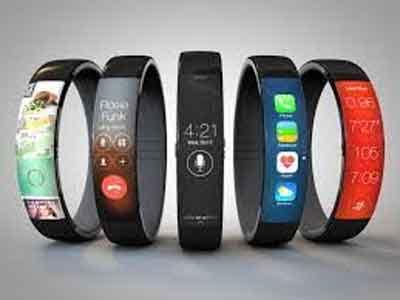- Home
- Editorial
- News
- Practice Guidelines
- Anesthesiology Guidelines
- Cancer Guidelines
- Cardiac Sciences Guidelines
- Critical Care Guidelines
- Dentistry Guidelines
- Dermatology Guidelines
- Diabetes and Endo Guidelines
- Diagnostics Guidelines
- ENT Guidelines
- Featured Practice Guidelines
- Gastroenterology Guidelines
- Geriatrics Guidelines
- Medicine Guidelines
- Nephrology Guidelines
- Neurosciences Guidelines
- Obs and Gynae Guidelines
- Ophthalmology Guidelines
- Orthopaedics Guidelines
- Paediatrics Guidelines
- Psychiatry Guidelines
- Pulmonology Guidelines
- Radiology Guidelines
- Surgery Guidelines
- Urology Guidelines
Wearable sweat sensor could help diagnose diseases like cystic fibrosis, diabetes

An ultra-sensitive, wearable sweat sensor may improve diagnosis and treatment of cystic fibrosis, diabetes and other conditions, researchers said.
Unlike previous sweat sensors, the new model requires only a trace of moisture to do its job and doesn’t require patients to sit still for 30 minutes while it collects sweat.
“This is a huge step forward,” said co-author Carlos Milla, associate professor of pediatrics at Stanford University.
The wearable device, designed in collaboration with researchers at the University of California, Berkeley, contains flexible sensors and microprocessors that stick to the skin and stimulate sweat glands.
It detects the presence of different molecules and ions for instance, sweat that contains more chloride generates a higher electrical voltage at the sensor’s surface.
High chloride ion levels may indicate cystic fibrosis, while high blood glucose levels are a sign of diabetes.
The sensor electronically transmits the results for analysis and diagnostics, according to the report in the Proceedings of the National Academy of Sciences.
Researchers hope the sensor might one day aid drug development and drug personalization for cystic fibrosis, a genetic disease that causes mucus to build up in the lungs and pancreas, and which is notoriously hard to treat.
“CF drugs work on only a fraction of patients,” said Sam Emaminejad, who is now an assistant professor of electrical engineering at University of California, Los Angeles (UCLA).
“Just imagine if you use the wearable sweat sensor with people in clinical drug investigations,” he said.
“We could get a much better insight into how their chloride ions go up and down in response to a drug.”
More research is needed to see if the wearable sweat sensor would work consistently from one day to the next, since the contents of a person’s sweat can change frequently based on diet and other factors.
Researchers also hope to learn more about which molecules in sweat can be mapped and may provide the most useful information.

Disclaimer: This site is primarily intended for healthcare professionals. Any content/information on this website does not replace the advice of medical and/or health professionals and should not be construed as medical/diagnostic advice/endorsement or prescription. Use of this site is subject to our terms of use, privacy policy, advertisement policy. © 2020 Minerva Medical Treatment Pvt Ltd